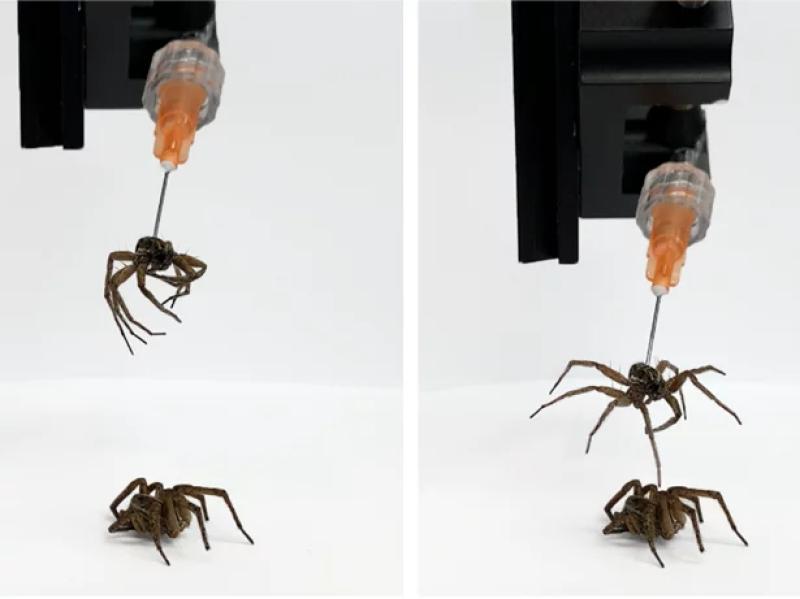Why scientists are reanimating spider corpses for research
Category: Health, Science & Technology
Via: hallux • 2 years ago • 2 commentsBy: Regina G. Barber, Anil Oza, Rachel Carlson, Rebecca Ramirez - NPR


That spider you squished? It could have been used for science!
At least, that's what Faye Yap and Daniel Preston think. Yap is a mechanical engineering PhD student in Preston's lab at Rice University, where she co-authored a paper on reanimating spider corpses to create grippers, or tiny machines used to pick up and put down delicate objects. Yap and Preston dubbed this use of biotic materials for robotic parts "necrobotics" – and think this technique could one day become a cheap, green addition to the field.
Creepy, crawly corpses
It all started when Yap noticed dead spiders curled in the corners of the lab one day. Why did they die on their backs with their legs curled in?
The question led her down a classic spiral of scientific curiosity.
"We did a really quick search online and we found that spiders do not have antagonistic muscle pairs," she said. "Instead they rely on flexor muscles to curl their legs inward toward their body and hydraulic pressure to extend their legs outward."
Since Preston's lab focuses on soft robotics, they saw the spider biology as inspiration for a pneumatic gripper, or claw-like device. But instead of a classic metal claw, they used something much spookier: a spider corpse.
From corpse to claw
When spiders die, their muscles tense up.
"So when the spider is alive, it can actively control the valves in each leg too, so that it can have this walking motion. But when it dies, it loses the control over these valves," Yap explains.
Yap wondered if she could re-impose control over the spider legs using compressed air.
The injected air pressurizes the dead spider's hemolymph (a rough analog of blood) that hasn't yet dried up in the corpse. The hemolymph adds pressure to the joints, creating a claw-like grabbing motion.
And Yap says the experiment worked!
The "necrobots," as Yap and Preston call them, could pick up fragile materials like wires and even other spiders up to 130% more massive than the reanimated spider grippers.
Who needs necrobotic spiders?
Preston says this was the first time a full animal was used as a robot.
"We've seen researchers use, for example, feathers from a bird for robotics applications," he says. "Other than that, we're not aware of people using biotic materials."
But beyond the novelty, Yap and Preston say the spiders are plentiful, convenient for researchers.
"Spiders, in this case, serve as a really good source material because nature does all the work for us," Preston says. "We don't have to build this pneumatically actuated gripper from scratch. We just use nature in this sense to harvest the spider and use it for the gripper."
Spider corpses are also biodegradable, which Preston argues makes them better for the environment than other robot parts – which often result in e-waste.
Yap and Preston are already seeing other researchers – and non-researchers – trying out the technique.
"Someone reached out from Australia and said, 'We did this together!' It was a father and son duo. And they said, you know, we did this in our backyard and it actually worked on the first try," Preston says. "So it's not just scientists, it seems."
So maybe the next time you see a spider curled up in the corner, consider channeling that panic into science.



Frankenspiders? Why thank you Faye and Daniel ...
Dr Herbert West says this isn't real reanimation.
Otherwise it's a really cool experiment in robotics.